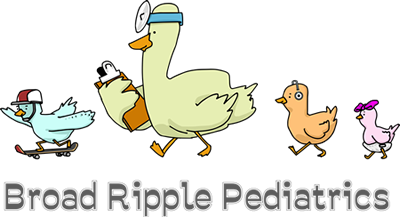Very interesting – and important – Covid related article written by Aaron E. Carroll, a professor of pediatrics at the IU School of Medicine. It was published here in the New York Time’s Op-Ed. For your convenience, I’ve inserted it below.
When It Comes to Covid-19, Most of Us Have Risk Exactly Backward
Written by: Aaron E. Carroll
“We aren’t very good at discussing trade-offs, but we need to make some during this pandemic.
My daughter argues that as long as she’s seeing all of her friends together in school, they should be able to gather together in their houses as well. Unfortunately, she has risk exactly backward. She’s not alone; lots of Americans do.
My kids, like most in Indiana, have been back at school since mid-August. Each time my 9th and 11th grader head off to high school, they spend more time among other human beings in a day than they had cumulatively all summer. Because of that, they along with many of their friends and those friends’ parents think that there’s less reason to be careful in other aspects of their lives.
But as we loosen restrictions in some areas, we should be increasing restrictions in others. If kids are going to take on more risk at school, they should find ways to be even safer outside of it. Large groupings at a friend’s house are not a good idea.
Too many view protective measures as all or nothing: Either we do everything, or we might as well do none. That’s wrong. Instead, we need to see that all our behavior adds up.
Each decision we make to reduce risk helps. Each time we wear a mask, we’re throwing some safety on the pile. Each time we socialize outside instead of inside, we’re throwing some safety on the pile. Each time we stay six feet away instead of sitting closer together, we’re throwing some safety on the pile. Each time we wash our hands, eat apart and don’t spend time in large gatherings of people, we’re adding to the pile.
If the pile gets big enough, we as a society can keep this thing in check.
But rather than focus on the cumulative benefits of individual actions, our attention too often rests on the few who refuse to act safely. We rage online over a couple of people who throw a fit about wearing a mask in a store. We spend far less time being grateful that so many Americans do wear one.
We don’t need everyone to wear a mask. We need more people to wear masks. We need to be willing to wear a mask even if others refuse, because every little bit matters.
This kind of thinking holds true even for vaccines, which add a huge amount to the pile. We won’t need everyone to get one to reach herd immunity. We just need enough people to do so.
To keep the pile big enough, though, we need to be willing to trade some activities for others. If people want to play on a sports team, for instance, they should consider giving something up to do so. Increasing their risk by participating in a group activity should prompt them to reduce their risk the rest of the time.
But we aren’t very good at discussing trade-offs. We want it all. We want to eat in restaurants, crowd into houses, go to work and celebrate occasions en masse.
We could choose to engage in just some of those things. We could decide to get a massage or get our nails done or have a haircut — instead of demanding that all of these and more be available to us simultaneously.
From a policy perspective, we’ve been just as unwilling to sacrifice. Almost everyone thinks that opening schools is extremely important (myself included). But too few people have been willing to discuss what we might be willing to shut down to make that happen. If we want to make it safer to send kids back to school, we might need to consider reducing the number of people who can drink in bars or eat in restaurants, for example.
Maybe, right now, we can’t have both schools and Disney World.
Of course, even if society can’t agree on which activities to prioritize, individuals can. We Carrolls haven’t seen most of our extended family in months. We’ve canceled a number of vacations big and small. When we eat with people who are not in our family, we do so outside in very small groups. My kids have been denied sleepovers and basketball games and hanging out in basements.
If Americans were willing to invest in bigger-picture solutions, we could all have nicer things. A vast testing program would require spending increases and many more public health personnel than we currently employ, but it could make many activities much safer. Providing more people with the means to stay home instead of going to their workplaces in person would significantly reduce close contact. Ubiquitous and affordable high-speed internet would make online education easier.
We all can’t live in bubbles like the one the N.B.A. created so it can finish the professional basketball season. But we could make use of the league’s testing methods. We could note its decision to hunker down and limit exposures. We could acknowledge that those involved felt the season was important enough to make personal sacrifices. I’m sure being paid millions of dollars made the decision easier, but many of us would be happy with more modest, less tangible rewards.
Instead of asking why we can’t do certain activities, we might consider what we’re willing to give up to do them more safely. Even better, we might even consider what we’re willing to give up so others can do them, too.”

One Comment
Pingback: